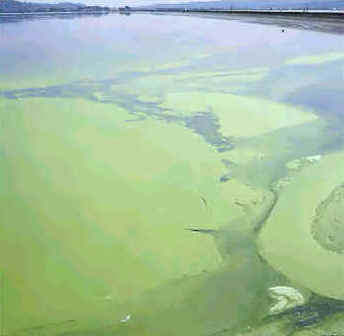Many living things are found in ponds. There are furry animals, birds, fish and countless insects. All these creatures, furry or feathered, large or small, are very interesting. There are also many water plants to be found in, or near, ponds. Some float in the water, others grow in the mud or on the banks.
It would have to be a very thick book to describe all
the creatures and plants to be seen in ponds. This one tells you about some you
may find for yourself. Ponds can be very different. Some are small and shallow,
others are wide and deep. You will know this if you have fished for sticklebacks
and tadpoles. Perhaps you have been
warned about the dangers of deep ponds. Another thing you might have noticed is
that although some ponds have clear water, others are muddy. Clear water makes
it easier to see the fish and other creatures, but many pond insects prefer to
have mud to hide in. Reeds and other tall water plants grow best in shallow
ponds. Their roots are in the mud on the bottom. The plants come up year after
year, and they provide cover for water birds. When the water birds are
disturbed, they often make for the jungles of reeds and hide there. If you
remain quiet, and watch carefully, you might see the birds come out again. You
may also see water voles leave their burrows in the banks. To watch carefully is
the best in the banks. To watch carefully is the best way to learn about the
shyer pond creatures.
Perhaps you have been
warned about the dangers of deep ponds. Another thing you might have noticed is
that although some ponds have clear water, others are muddy. Clear water makes
it easier to see the fish and other creatures, but many pond insects prefer to
have mud to hide in. Reeds and other tall water plants grow best in shallow
ponds. Their roots are in the mud on the bottom. The plants come up year after
year, and they provide cover for water birds. When the water birds are
disturbed, they often make for the jungles of reeds and hide there. If you
remain quiet, and watch carefully, you might see the birds come out again. You
may also see water voles leave their burrows in the banks. To watch carefully is
the best in the banks. To watch carefully is the best way to learn about the
shyer pond creatures.
About Ponds
There are many, many ponds of various kinds of us to
explore, even in the heart of our busy towns. Wherever water collects for any
length of time, new life springs rapidly into being. You can test this fact for
yourself by sinking a bowl into the ground and letting it fill naturally with
rainwater. Before many days have passed, you will see that a green scum is
beginning to cover the surface.  This
is called algae, and it has grown from spores so tiny you cannot see them with
the naked eye. You need a microscope. Algae gives off oxygen. All animals need
oxygen to live, just as we do; so although this green scum may not look very
attractive, it is essential to maintain life in the water. Watch this new pond,
and one day you will see tiny air-bubbles rising to the surface. When this
happens you will know for certain animal life is present. Now let us part the
covering of green scum on the well-established pond in our picture and look at
the teeming, bustling life in the water-world below. Although some ponds have a
natural origin, maybe formed when some accident of the landscape damned the flow
of a stream, most ponds represent mans mark on the countryside. A clue to this
lies in the very origin of the word pond. It comes from an old English source
which also gave us the verb to pound meaning to enclose or dam up.
This
is called algae, and it has grown from spores so tiny you cannot see them with
the naked eye. You need a microscope. Algae gives off oxygen. All animals need
oxygen to live, just as we do; so although this green scum may not look very
attractive, it is essential to maintain life in the water. Watch this new pond,
and one day you will see tiny air-bubbles rising to the surface. When this
happens you will know for certain animal life is present. Now let us part the
covering of green scum on the well-established pond in our picture and look at
the teeming, bustling life in the water-world below. Although some ponds have a
natural origin, maybe formed when some accident of the landscape damned the flow
of a stream, most ponds represent mans mark on the countryside. A clue to this
lies in the very origin of the word pond. It comes from an old English source
which also gave us the verb to pound meaning to enclose or dam up.
